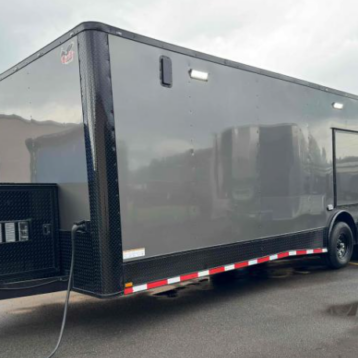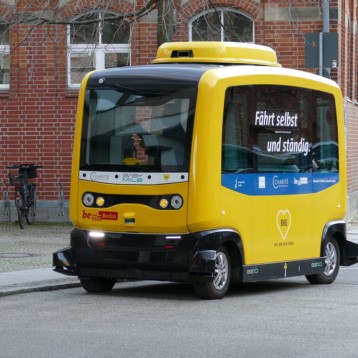The Rocket Racer single-pilot vehicle uses a standard airframe with slight modifications, which are derivations of the Velocity XL and SE models built by Velocity Aircraft, a subsidiary of Rocket Racing Inc. These vehicles are equipped with integrated 1,500 – 2,500 pound thrust rocket engine burning liquid oxygen (LOX) and Kerosene or Ethanol, and are capable of up to four minutes of rocket burn and an excess of 12 – 15 minutes of un-powered (glide) flight.
According to the RRL vision, races will consist of 4-lap, multiple elimination heats over a 5-mile closed circuit raceway in the sky. The 3D racetrack will be approximately one mile wide, two miles long and one mile high and will include various difficulty levels and obstacles, shaped by virtual GPS “tunnels”. The track will be projected to the pilots via 3D displays in their helmets. Five cameras will be mounted on each plane, allowing the viewers to see the action on large projection screens where they will be able to track the rocket planes as they are racing.
“Rocket Racer pilots will navigate the raceways using a variety of displays from in-panel to heads-up to helmet mount. Each Rocket Racer vehicle will draw from precise differential GPS tracking with an integrated inertial navigation system, providing spatial accuracy within one meter,” explains the company.
The first public demonstration flight took place on Tuesday, July 29th 2008, at the EAA AirVenture in Oshkosh, WI, and was followed by two more flights on the 1st and 2nd of August. The test pilot flying the Rocket Racer was two-time NASA Shuttle commander Rick Searfoss. Currently, six teams are registered to compete in the Rocket Racing League’s Inaugural Season.
TFOT previously reported on the X-PRIZE Foundation’s announcement that it would sponsor the newly renamed Progressive Automotive X PRIZE International Competition. This $10 million competition is designed to bring about radical breakthroughs by encouraging the design and creation of a new generation of viable, super fuel-efficient vehicles, which will also be affordable for the average consumers. TFOT also covered the unveiling of Space Ship Two, which was based on the Ansari X Prize winning technology of Space Ship One, the world’s first privately developed and funded manned spacecraft.
More information about the Rocket Racing League can be found here.










